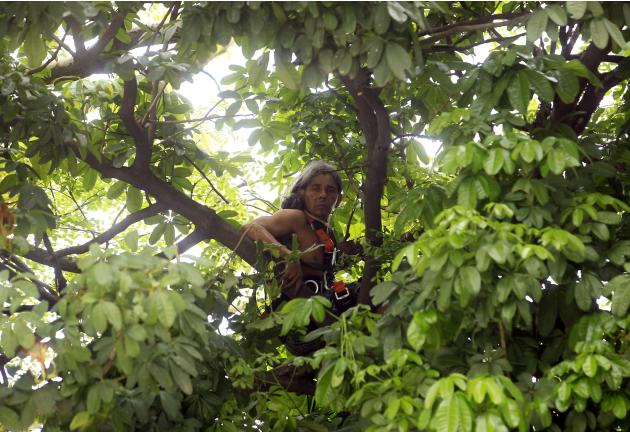
Another violent eviction in the name of sports as the fight for Aldeia Maracanã continues. As reported in March 2013 on this blog, the Guajajara Indians and indigenous peoples from across Brazil were resisting removal from the historic ruins of an Indian Museum in Rio de Janeiro known as "Maracana Village." The grounds have been informally recognized as indigenous territory for some time. The building and surrounding area have been continually occupied since at least 2006.
The village has been an icon for indigenous peoples across Brazil, many staying at Aldeia Maracanã when coming to Rio for medical treatment, studies, or to sell handcrafts in an open market. Local industry was developing quite a bit in this central Rio location with various educational, therapeutic, and cultural collaborations, tribal language and dialect studies, the on-site production and sale of crafts and traditional arts. This arrangement would have continued, and continued to grow except that .. one day, the government decided they wanted the property for the 2014 World Cup and 2016 Olympics.
Since the last report here, activists obtained more formalized rights to the old museum for establishing a first-time-ever indigenous peoples university. There are two other buildings in the compound of the territory, one with fully equipped rooms (a former national agriculture laboratory), and another that had been partly destroyed. The group has wanted the fully equipped building as the future headquarters of the university, and the Rio governor, Sergio Cabral, assured them that the building would not be demolished.
However, on Thursday, December 12th, the Maracana Consortium - established by Odebrecht, IMX of Brazil, and Seattle-based AEG of the U.S. - began demolition, regardless. Greatly disturbed by the demolition, the group decided to risk stronger opposition, and they entered and occupied the empty laboratory - and to stop it.
The authorities responded by sending 80 warrantless riot police in full militarized gear who can be seen in the photo below on December 15th forcibly removing a small and very young barefoot child in the group (photo via Raoni.com).
Little information appears available on this recent eviction, though we understand that 25 people were arrested with one accused of stealing documents.
The photo at the top of this post shows Guajajara Indian Uratau Jose in a tree as the last remaining resistance at the village. He maintained his position in the branches for 26 hours before being removed by firefighters on Tuesday morning, December 17th (photo via Pilar Olivares with Reuters).
Following eviction from the laboratory, people immediately reoccupied the museum.
Raoni reports the government now saying that, while the Indians will be able to have the museum, the laboratory will be destroyed in order to build a new football museum within the indigenous territory, and in time for the Olympics; that the museum's use will be determined by the state first - in collaboration with indigenous leaders - and not in the spirit or way it was intended by the indigenous groups who have been using it for many years - and, that it will be not be operational before the end of the World Cup.
However, it appears the museum is still occupied.

No comments:
Post a Comment